From Medea to Helen of Troy, Greek myths still speak to the modern world. Classicist Charlotte Higgins explores stories that weave together the fabric of our existence
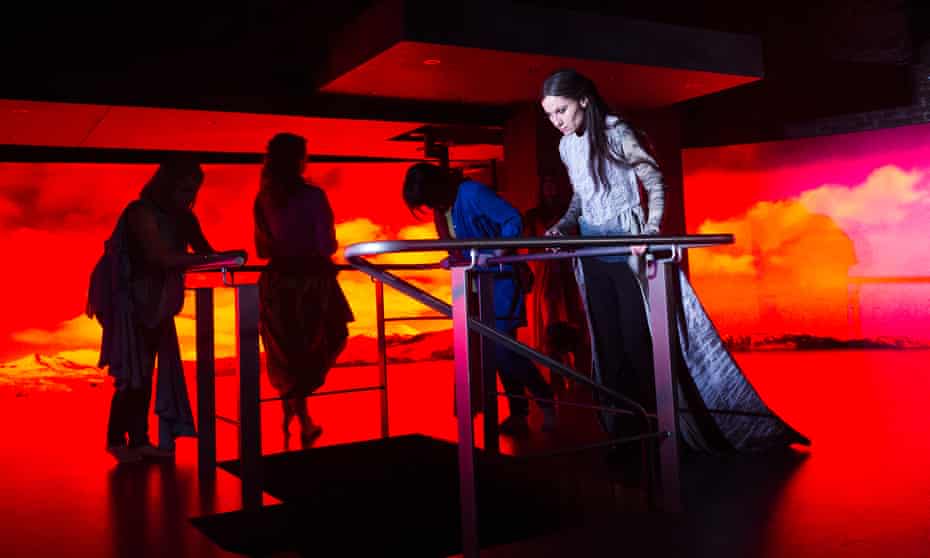
Kate Fleetwood as Medea at the Almeida theatre, London, 2015.
Photograph: Tristram Kenton/The Guardian
Charlotte Higgins
Fri 3 Sep 2021
Among my most treasured books as a child was a volume of Greek myths. My eldest brother, a sleep-deprived junior doctor at the time, bought it for me from a warren-like bookshop near his flat in London. The shop, sadly, is long gone, but I still have Children of the Gods by Kenneth McLeish, illustrated by Elisabeth Frink. It infiltrated my childhood imagination – it was one of the things that set me on the path to studying classics, and becoming a writer. The stories were strange and wild, full of powerful witches, unpredictable gods and sword-wielding slayers. They were also extreme: about families who turn murderously on each other; impossible tasks set by cruel kings; love that goes wrong; wars and journeys and terrible loss. There was magic, there was shapeshifting, there were monsters, there were descents to the land of the dead. Humans and immortals inhabited the same world, which was sometimes perilous, sometimes exciting. The stories were obviously fantastical. All the same, brothers really do war with each other. People tell the truth but aren’t believed. Wars destroy the innocent. Lovers are parted. Parents endure the grief of losing children. Women suffer violence at the hands of men. The cleverest of people can be blind to what is really going on. The law of the land can contradict what you know to be just. Mysterious diseases devastate cities. Floods and fire tear lives apart.
For the Greeks, the word muthos simply meant a traditional tale. In the 21st century, we have long left behind the political and religious framework in which these stories first circulated – but their power endures. Greek myths remain true for us because they excavate the very extremes of human experience: sudden, inexplicable catastrophe; radical reversals of fortune; seemingly arbitrary events that transform lives. They deal, in short, in the hard basic facts of the human condition. For the ancient Greeks and Romans, myths were everywhere. The stories were painted on the pottery that people ate and drank from; they were carved into the pediments of the temples outside which they sacrificed to the gods; they were the raw material of the songs they sang and the rituals they performed. Myths provided a shared cultural language, and a tentacular, ever-branching network of routes towards understanding the nature of the world, of human and divine life. They explained the stars. They told of the creation of plants and animals, rocks and streams. They hovered around individual locales, explaining the origin of towns, regional cults and families. They reinforced customs and norms – sometimes offering a narrative justification for habits of oppression, not least of women and outsiders. For a people scattered liberally across the Mediterranean and the Black Sea – Greek culture flowed out well beyond the boundaries of the modern Greek state – they also provided a shared sense of cultural identity.
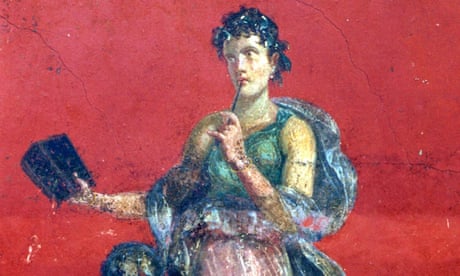
Epic win! Why women are lining up to reboot the classics
What we think of as “the Greek myths” are the stories we find in the poetry, plays and prose of the ancient Greeks and Romans – a world also animated by an extraordinary surviving visual culture including ceramics, sculpture and frescoes. These myths deal with a long-lost past in which the worlds of immortals and humans overlap, and in which some exceptional humans can become almost divine. It is from this vast, contradictory, extraordinarily variegated body of literature that the tales in my new book are taken.
There was no canonical, fully authoritative account of the Greek myths in antiquity. There were certainly versions of stories that dominated. Euripides’s rendering of the Medea story, for example, became extremely popular, and you can see its famous final scene – the titular character magnificent in her dragon-drawn chariot – painted on Greek pots. But stories of the Greeks were endlessly variable, endlessly proliferating. The dizzying variety of stories reflects the geography, politics and culture of the Greek world – scattered over a mountainous mainland, a jagged coastline, hundreds of islands, and the western seaboard of what is now Anatolia. From the 8th century BC onwards, expanding trade networks also led Greeks to settle around the Black Sea, and on the coasts of north Africa, southern France and Spain. The same goddess might come with different associations, and differently weighted stories, in different city-states.
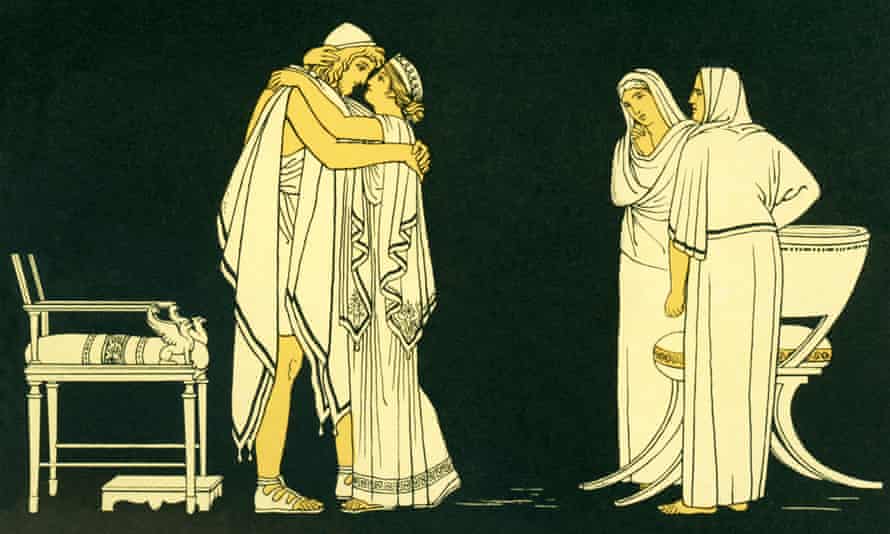
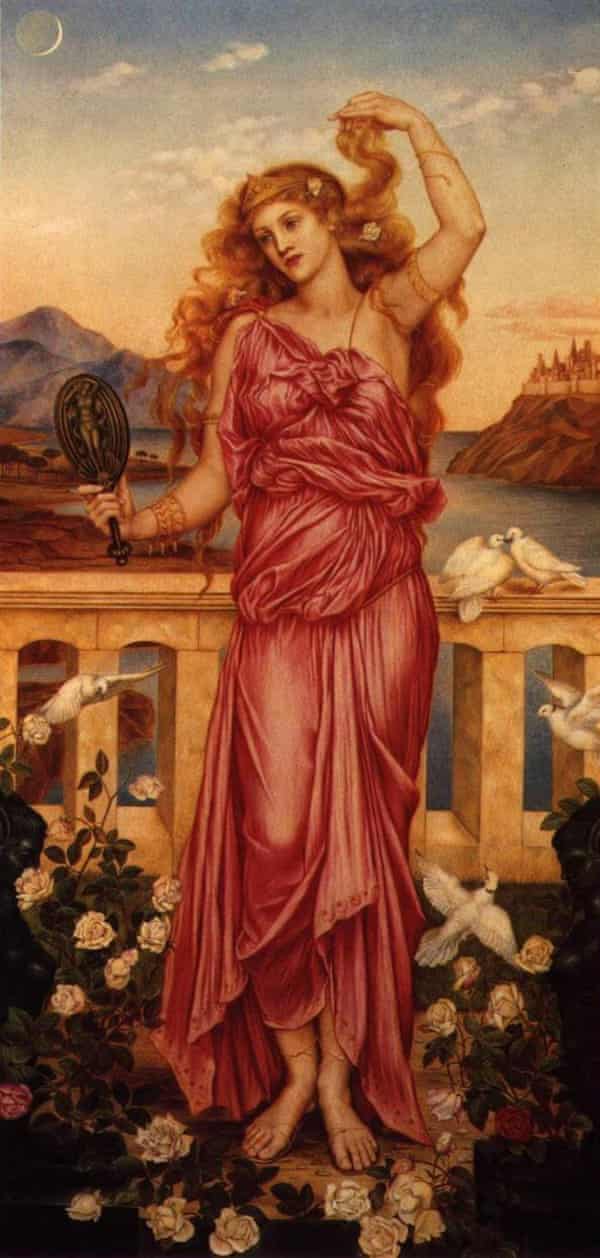
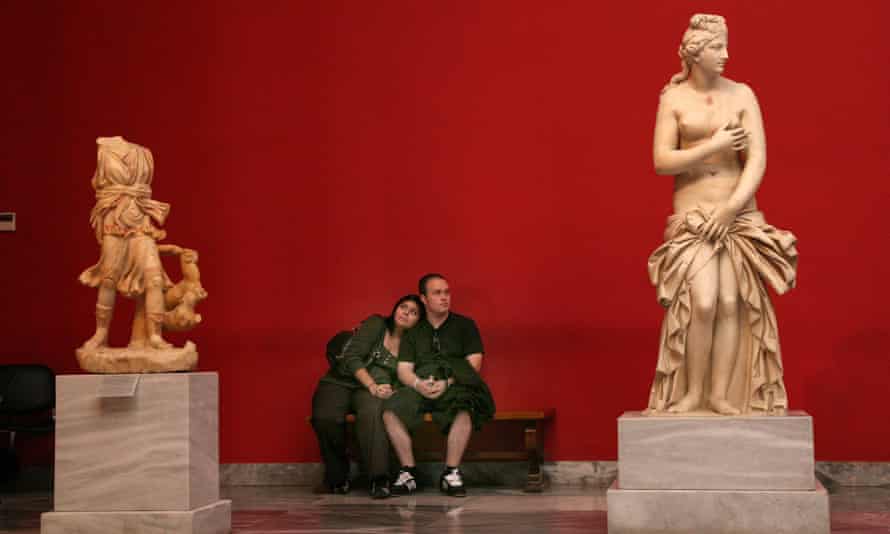
Greek Myths: A New Retelling is published by Jonathan Cape (£20).

Charlotte Higgins will be in conversation with Mary Beard about the Greek myths at a Guardian Live online event on 3 November. Book tickets here
Charlotte Higgins
Fri 3 Sep 2021
Among my most treasured books as a child was a volume of Greek myths. My eldest brother, a sleep-deprived junior doctor at the time, bought it for me from a warren-like bookshop near his flat in London. The shop, sadly, is long gone, but I still have Children of the Gods by Kenneth McLeish, illustrated by Elisabeth Frink. It infiltrated my childhood imagination – it was one of the things that set me on the path to studying classics, and becoming a writer. The stories were strange and wild, full of powerful witches, unpredictable gods and sword-wielding slayers. They were also extreme: about families who turn murderously on each other; impossible tasks set by cruel kings; love that goes wrong; wars and journeys and terrible loss. There was magic, there was shapeshifting, there were monsters, there were descents to the land of the dead. Humans and immortals inhabited the same world, which was sometimes perilous, sometimes exciting. The stories were obviously fantastical. All the same, brothers really do war with each other. People tell the truth but aren’t believed. Wars destroy the innocent. Lovers are parted. Parents endure the grief of losing children. Women suffer violence at the hands of men. The cleverest of people can be blind to what is really going on. The law of the land can contradict what you know to be just. Mysterious diseases devastate cities. Floods and fire tear lives apart.
For the Greeks, the word muthos simply meant a traditional tale. In the 21st century, we have long left behind the political and religious framework in which these stories first circulated – but their power endures. Greek myths remain true for us because they excavate the very extremes of human experience: sudden, inexplicable catastrophe; radical reversals of fortune; seemingly arbitrary events that transform lives. They deal, in short, in the hard basic facts of the human condition. For the ancient Greeks and Romans, myths were everywhere. The stories were painted on the pottery that people ate and drank from; they were carved into the pediments of the temples outside which they sacrificed to the gods; they were the raw material of the songs they sang and the rituals they performed. Myths provided a shared cultural language, and a tentacular, ever-branching network of routes towards understanding the nature of the world, of human and divine life. They explained the stars. They told of the creation of plants and animals, rocks and streams. They hovered around individual locales, explaining the origin of towns, regional cults and families. They reinforced customs and norms – sometimes offering a narrative justification for habits of oppression, not least of women and outsiders. For a people scattered liberally across the Mediterranean and the Black Sea – Greek culture flowed out well beyond the boundaries of the modern Greek state – they also provided a shared sense of cultural identity.

Epic win! Why women are lining up to reboot the classics
What we think of as “the Greek myths” are the stories we find in the poetry, plays and prose of the ancient Greeks and Romans – a world also animated by an extraordinary surviving visual culture including ceramics, sculpture and frescoes. These myths deal with a long-lost past in which the worlds of immortals and humans overlap, and in which some exceptional humans can become almost divine. It is from this vast, contradictory, extraordinarily variegated body of literature that the tales in my new book are taken.
There was no canonical, fully authoritative account of the Greek myths in antiquity. There were certainly versions of stories that dominated. Euripides’s rendering of the Medea story, for example, became extremely popular, and you can see its famous final scene – the titular character magnificent in her dragon-drawn chariot – painted on Greek pots. But stories of the Greeks were endlessly variable, endlessly proliferating. The dizzying variety of stories reflects the geography, politics and culture of the Greek world – scattered over a mountainous mainland, a jagged coastline, hundreds of islands, and the western seaboard of what is now Anatolia. From the 8th century BC onwards, expanding trade networks also led Greeks to settle around the Black Sea, and on the coasts of north Africa, southern France and Spain. The same goddess might come with different associations, and differently weighted stories, in different city-states.

Penelope welcomes her husband Odysseus after he has rid the palace of the suitors.
Photograph: Ivy Close Images/Alamy
This bubbling, argumentative diversity is reflected in classical literature. Disagreement on the details, I’d go so far as to say, is one of the most noticeable aspects of Greek storytelling about gods and mortals; ancient mythography is full of warnings along the lines of “some people say this happened but other people, somewhere else, say that something different happened”. For writers from antiquity onwards, this sense of branching choices has provided exhilarating freedom. A change of emphasis in a mythical tale could happen through compressing certain details in favour of expanding others. (A stratagem often used by the tragedians was to use an apparently minor episode in Homer as the seed from which to grow an entire plot.) It could happen through selecting a particular point of view for the telling, as Ovid does in his Heroides, a series of poems in the form of letters from female characters to mythical heroes. Stories could be radically altered: a playwright could perfectly well write a play in which Helen of Troy never actually goes to Troy. (I’m referring to Euripides’s Helen, in which the Greeks and Trojans fight over a replica Helen made of clouds, while the real woman sits out the war in Egypt; the playwright was borrowing the idea from the sixth-century BC poet Stesichorus.)
For the tragic playwrights of the fifth century BC, myth also offered a means of confronting contemporary politics and society. Aeschylus’s Oresteia trilogy is set in the distant aftermath of the Trojan war, but it also offers an origin myth – and thus a kind of legitimisation – for a new democratic order in Athens. Euripides’s Trojan Women and Hecuba are also set at the time of Troy’s defeat, but you can read them as reflections on the moral failures of the playwright’s own day, as Athens poured resources and human lives into a grinding 30-year conflict with Sparta. That’s partly why the plays are still being staged now, their urgency and vitality undimmed.
For all these reasons, the modern reteller can never be some kind of faithful handmaiden of the stories. She must choose where, and at whom, to point the camera. In the compendia of mythical stories produced in the 19th and 20th centuries, particularly those for children, the camera was usually pointed firmly at the figure of the hero. These characters – Heracles, Perseus, Jason, Theseus – were often subtly, or unsubtly, co-opted to offer models of male virtue for their young readers. Female characters were frequently relegated to the background as defenceless virgins, vicious monsters or grotesque old women. Homosexual desire was usually banished altogether.
This bubbling, argumentative diversity is reflected in classical literature. Disagreement on the details, I’d go so far as to say, is one of the most noticeable aspects of Greek storytelling about gods and mortals; ancient mythography is full of warnings along the lines of “some people say this happened but other people, somewhere else, say that something different happened”. For writers from antiquity onwards, this sense of branching choices has provided exhilarating freedom. A change of emphasis in a mythical tale could happen through compressing certain details in favour of expanding others. (A stratagem often used by the tragedians was to use an apparently minor episode in Homer as the seed from which to grow an entire plot.) It could happen through selecting a particular point of view for the telling, as Ovid does in his Heroides, a series of poems in the form of letters from female characters to mythical heroes. Stories could be radically altered: a playwright could perfectly well write a play in which Helen of Troy never actually goes to Troy. (I’m referring to Euripides’s Helen, in which the Greeks and Trojans fight over a replica Helen made of clouds, while the real woman sits out the war in Egypt; the playwright was borrowing the idea from the sixth-century BC poet Stesichorus.)
For the tragic playwrights of the fifth century BC, myth also offered a means of confronting contemporary politics and society. Aeschylus’s Oresteia trilogy is set in the distant aftermath of the Trojan war, but it also offers an origin myth – and thus a kind of legitimisation – for a new democratic order in Athens. Euripides’s Trojan Women and Hecuba are also set at the time of Troy’s defeat, but you can read them as reflections on the moral failures of the playwright’s own day, as Athens poured resources and human lives into a grinding 30-year conflict with Sparta. That’s partly why the plays are still being staged now, their urgency and vitality undimmed.
For all these reasons, the modern reteller can never be some kind of faithful handmaiden of the stories. She must choose where, and at whom, to point the camera. In the compendia of mythical stories produced in the 19th and 20th centuries, particularly those for children, the camera was usually pointed firmly at the figure of the hero. These characters – Heracles, Perseus, Jason, Theseus – were often subtly, or unsubtly, co-opted to offer models of male virtue for their young readers. Female characters were frequently relegated to the background as defenceless virgins, vicious monsters or grotesque old women. Homosexual desire was usually banished altogether.

Helen of Troy, by Evelyn de Morgan. Photograph: Alamy
Nathaniel Hawthorne’s volumes A Wonder Book for Boys and Girls and Tanglewood Tales provide excellent examples of this kind of tendency: his Theseus is a stout-hearted chap, unafraid of monsters; his Ariadne too virtuous a maid to abandon her family; his Medea reduced to a vindictive, jealous stepmother and ill-natured enchantress.
A complication for the reader (and reteller) is that the heros of ancient Greek literature was not at all the kind of person meant when the word “hero” is used in modern English – the self-sacrificing military man whom Hawthorne might have had in mind, or the frontline healthcare worker we might think of today. The heros of Greek literature was an extreme and disturbing figure, closely connected to the gods. Achilles is by modern standards a war criminal who violates his enemy’s corpse; Heracles murders his own wife and children; Theseus is a rapist.
Some of the flattening-down of the strangeness and violence of the characters of classical literature has doubtless been an understandable consequence of retelling the tales with children in mind. But the Greek myths shouldn’t be thought of as children’s stories – or just as children’s stories. In some ways, they are the most grownup stories I know. In recent years there has been a blossoming of novels – among them Pat Barker’s The Silence of the Girls, Natalie Haynes’s A Thousand Ships and Madeline Miller’s Circe – that have placed female mythological characters at the centre of stories to which they have often been regarded as peripheral. And authors such as Kamila Shamsie (in her novel Home Fire) have used Greek myths as frameworks on which to hang modern stories. My new book, however, is more like an ancient mythological compendium than a novel. My work has not been to bring psychological insight to bear on a cast of characters as they develop through time, as a novelist might do, but to beckon the reader onwards through a many storied landscape, finding a particular path through a forest of tales.
To emphasise the contrast between different approaches is not to devalue the old retellings, such as Roger Lancelyn Green’s wonderful volume for children, Tales of the Greek Heroes, or Robert Graves’s beautifully written The Greek Myths, which provides an intriguing monument to his own preoccupations, prejudices and theories. Rather, it is to underline the power of the Greek myths to produce resonance for every new reader and writer, and for every generation. Once activated by a fresh imagination, the stories burst into fresh life. The Greek myths are the opposite of timeless: they are timely.
My first concern was to decide how to frame or organise my chosen stories. I considered the greatest of all compendia of myths: Ovid’s Metamorphoses, an epic poem about legendary transformations. Its content is inseparable from its structure: the poem organically transforms as it progresses, seamlessly unfurling each new story from the last. The form itself is expressive. Nothing is stable, it says. Everything is contingent, matter is always on the move.
Nathaniel Hawthorne’s volumes A Wonder Book for Boys and Girls and Tanglewood Tales provide excellent examples of this kind of tendency: his Theseus is a stout-hearted chap, unafraid of monsters; his Ariadne too virtuous a maid to abandon her family; his Medea reduced to a vindictive, jealous stepmother and ill-natured enchantress.
A complication for the reader (and reteller) is that the heros of ancient Greek literature was not at all the kind of person meant when the word “hero” is used in modern English – the self-sacrificing military man whom Hawthorne might have had in mind, or the frontline healthcare worker we might think of today. The heros of Greek literature was an extreme and disturbing figure, closely connected to the gods. Achilles is by modern standards a war criminal who violates his enemy’s corpse; Heracles murders his own wife and children; Theseus is a rapist.
Some of the flattening-down of the strangeness and violence of the characters of classical literature has doubtless been an understandable consequence of retelling the tales with children in mind. But the Greek myths shouldn’t be thought of as children’s stories – or just as children’s stories. In some ways, they are the most grownup stories I know. In recent years there has been a blossoming of novels – among them Pat Barker’s The Silence of the Girls, Natalie Haynes’s A Thousand Ships and Madeline Miller’s Circe – that have placed female mythological characters at the centre of stories to which they have often been regarded as peripheral. And authors such as Kamila Shamsie (in her novel Home Fire) have used Greek myths as frameworks on which to hang modern stories. My new book, however, is more like an ancient mythological compendium than a novel. My work has not been to bring psychological insight to bear on a cast of characters as they develop through time, as a novelist might do, but to beckon the reader onwards through a many storied landscape, finding a particular path through a forest of tales.
To emphasise the contrast between different approaches is not to devalue the old retellings, such as Roger Lancelyn Green’s wonderful volume for children, Tales of the Greek Heroes, or Robert Graves’s beautifully written The Greek Myths, which provides an intriguing monument to his own preoccupations, prejudices and theories. Rather, it is to underline the power of the Greek myths to produce resonance for every new reader and writer, and for every generation. Once activated by a fresh imagination, the stories burst into fresh life. The Greek myths are the opposite of timeless: they are timely.
My first concern was to decide how to frame or organise my chosen stories. I considered the greatest of all compendia of myths: Ovid’s Metamorphoses, an epic poem about legendary transformations. Its content is inseparable from its structure: the poem organically transforms as it progresses, seamlessly unfurling each new story from the last. The form itself is expressive. Nothing is stable, it says. Everything is contingent, matter is always on the move.

Statues of Aphrodite and Artemis in the National Archaeological Museum, Athens.
Photograph: Vova Pomortzeff/Alamy
Clearly, I am not out to rival Ovid, but I realised that, like Ovid, I wanted the form of my chosen stories to be expressive in itself. I thought about other ancient authors who had framed mythological poems or compendia around various themes. One early text had used female characters as its organising principle: the fragmentary Catalogue of Women, once attributed to Hesiod. What remains is important and often beautiful; but it is a work that is largely concerned to establish genealogies of heroes, and the women’s chief role is to give birth. There was also the lost Ornithigonia by Boios, about the mythical origins of birds; the little handbook of erotic stories, Sufferings in Love by Parthenius of Nicaea (said to have been Virgil’s Greek teacher); and the fragmentary collection of star myths, Catasterismi, attributed to the Libya-born polymath, Eratosthenes. I decided to frame my Greek myths as stories told by female characters. Or to be strictly accurate, my women are not telling the stories. They have, rather, woven their tales on to elaborate textiles. The book, in large part, consists of my descriptions of these imagined tapestries.
This idea is rooted in a recurring motif in classical literature: the idea of telling stories through descriptions of spectacular artworks, a literary convention known as ekphrasis. The first and most famous ekphrasis is the description of the scenes decorating the shield of Achilles, in the Iliad. Much later, in the first century BC, the entire story of Theseus, Ariadne and the Minotaur was told by the Roman poet Catullus through a long description of the designs woven into a bedspread. A feature of ekphrasis was that the item under description could, at times, take on its own life as a narrative, escaping the status of an imagined object. Specifically, though, the idea is inspired by the occasions in classical literature when female characters take control of a story.
On a number of striking occasions, this happens through the act of weaving. Take Helen of Troy: when we first encounter this most famous of literary characters, in book three of the Iliad, she is at her loom, weaving the stories of the struggles between the Greeks and the Trojans. She is the only person in the poem who has the insight to stand at a distance from the events unfolding in front of her, to interpret them, and to make art about them. Intriguingly, an early commentator on the poem, writing in antiquity, observed of this passage: “The poet has formed a worthy model for his own poetic enterprise.” Both writer and character are, the early critic noticed, making art from the same material – the poet in verse, Helen in tapestry.
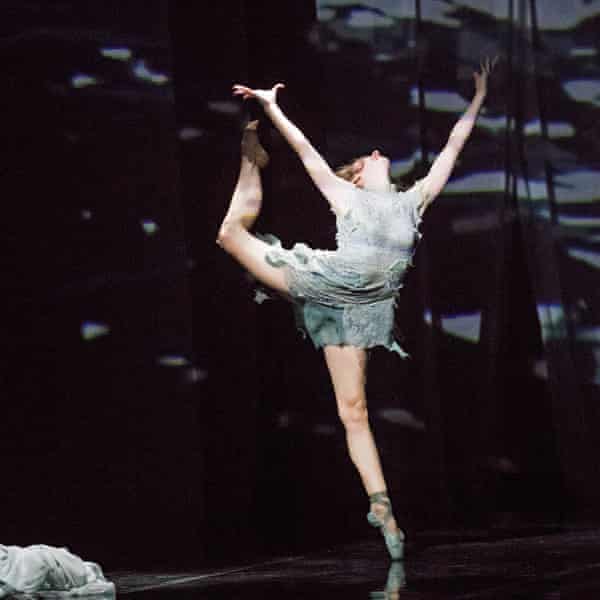
Clearly, I am not out to rival Ovid, but I realised that, like Ovid, I wanted the form of my chosen stories to be expressive in itself. I thought about other ancient authors who had framed mythological poems or compendia around various themes. One early text had used female characters as its organising principle: the fragmentary Catalogue of Women, once attributed to Hesiod. What remains is important and often beautiful; but it is a work that is largely concerned to establish genealogies of heroes, and the women’s chief role is to give birth. There was also the lost Ornithigonia by Boios, about the mythical origins of birds; the little handbook of erotic stories, Sufferings in Love by Parthenius of Nicaea (said to have been Virgil’s Greek teacher); and the fragmentary collection of star myths, Catasterismi, attributed to the Libya-born polymath, Eratosthenes. I decided to frame my Greek myths as stories told by female characters. Or to be strictly accurate, my women are not telling the stories. They have, rather, woven their tales on to elaborate textiles. The book, in large part, consists of my descriptions of these imagined tapestries.
This idea is rooted in a recurring motif in classical literature: the idea of telling stories through descriptions of spectacular artworks, a literary convention known as ekphrasis. The first and most famous ekphrasis is the description of the scenes decorating the shield of Achilles, in the Iliad. Much later, in the first century BC, the entire story of Theseus, Ariadne and the Minotaur was told by the Roman poet Catullus through a long description of the designs woven into a bedspread. A feature of ekphrasis was that the item under description could, at times, take on its own life as a narrative, escaping the status of an imagined object. Specifically, though, the idea is inspired by the occasions in classical literature when female characters take control of a story.
On a number of striking occasions, this happens through the act of weaving. Take Helen of Troy: when we first encounter this most famous of literary characters, in book three of the Iliad, she is at her loom, weaving the stories of the struggles between the Greeks and the Trojans. She is the only person in the poem who has the insight to stand at a distance from the events unfolding in front of her, to interpret them, and to make art about them. Intriguingly, an early commentator on the poem, writing in antiquity, observed of this passage: “The poet has formed a worthy model for his own poetic enterprise.” Both writer and character are, the early critic noticed, making art from the same material – the poet in verse, Helen in tapestry.

Laurretta Summerscales in Yabin Wang’s reading of the Medea myth, M-Dao,
by English National Ballet, 2016.
Photograph: Tristram Kenton/The Guardian
In the Odyssey, Penelope waits at home on the island of Ithaca for her husband, Odysseus. He has been away for 20 years, 10 years besieging Troy, and another 10 who knows where. He’s probably dead. It is time for her to remarry. She tells the suitors who are harassing her that she will decide on a husband when she has finished making her father-in-law’s winding sheet. Every day she weaves. Every night she unravels her work, delaying the decision. Describing this device, which is also a plot device, she uses the verb tolupeuein, which means to roll wool into rovings for spinning – or, metaphorically, to contrive a stratagem.
In Ovid’s Metamorphoses, Philomela, an Athenian princess, has been imprisoned and raped. The perpetrator, her brother-in-law Tereus, has cut out her tongue to prevent her from telling anyone. But she weaves her story, and thus bears witness to the crime, moving the plot along to a gruesome conclusion. In another part of Metamorphoses, a young woman called Arachne challenges the goddess Minerva (the Roman version of Athena) to a tapestry-making contest. Arachne weaves a design showing the terrible crimes committed by the gods; Minerva – who is, significantly, the goddess of winning – depicts the stories of the awful punishments that lie in wait for humans when they challenge the gods. Arachne will soon discover the consequences of her choice of design. These are some of the characters who control the many narratives contained in my book.
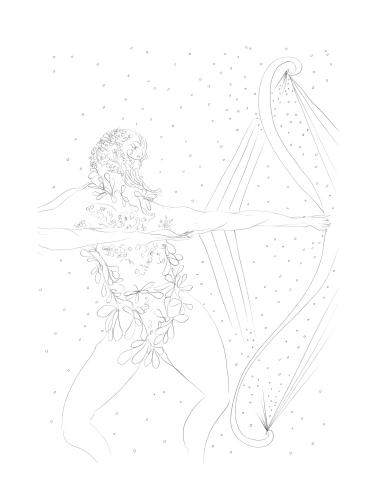
In the Odyssey, Penelope waits at home on the island of Ithaca for her husband, Odysseus. He has been away for 20 years, 10 years besieging Troy, and another 10 who knows where. He’s probably dead. It is time for her to remarry. She tells the suitors who are harassing her that she will decide on a husband when she has finished making her father-in-law’s winding sheet. Every day she weaves. Every night she unravels her work, delaying the decision. Describing this device, which is also a plot device, she uses the verb tolupeuein, which means to roll wool into rovings for spinning – or, metaphorically, to contrive a stratagem.
In Ovid’s Metamorphoses, Philomela, an Athenian princess, has been imprisoned and raped. The perpetrator, her brother-in-law Tereus, has cut out her tongue to prevent her from telling anyone. But she weaves her story, and thus bears witness to the crime, moving the plot along to a gruesome conclusion. In another part of Metamorphoses, a young woman called Arachne challenges the goddess Minerva (the Roman version of Athena) to a tapestry-making contest. Arachne weaves a design showing the terrible crimes committed by the gods; Minerva – who is, significantly, the goddess of winning – depicts the stories of the awful punishments that lie in wait for humans when they challenge the gods. Arachne will soon discover the consequences of her choice of design. These are some of the characters who control the many narratives contained in my book.

Chris Ofili’s illustration of Odysseus’s return, for Greek Myths: A New Retelling
Running through Greek and Roman thought is a persistent connection between the written word and the woven thread, between text and textile. The Latin verb texere, from which the English words text and textile derive, means to weave, or compose, or to fit a complex structure together. Textum means fabric, or framework, or even, in certain branches of materialist philosophy, atomic structure. The universe itself is sometimes described as a kind of fabric: Lucretius, in his first-century BC scientific poem On the Nature of the Universe, describes the earth, sea and sky as three dissimilar elements that are texta, woven together. Texere is related to the Greek verb tikto, which means to engender, to bring about, to produce, to give birth to. In turn the Latin and Greek words are related to the Sanskrit takman, child, and taksh, to make or to weave. Greek and Roman literature is full of metaphors that compare its own creation to spinning and weaving. Ovid describes Metamorphoses, for example, as deductam carmen, a fine-spun song. When relating how he outwitted the Cyclops, Homer’s Odysseus says: “I wove all kinds of wiles and cunning schemes” – which you could read as a description of the shrewd design of the Odyssey itself.
My book reasserts the connectedness of all this: text and textile, the universe, the production of ideas, the telling of stories, and the delicate filaments of human life. These are the lives that are so cunningly and ruthlessly manipulated by the Fates, the all powerful ancient goddesses who spin, wind and finally cut the thread of each person’s existence.
Running through Greek and Roman thought is a persistent connection between the written word and the woven thread, between text and textile. The Latin verb texere, from which the English words text and textile derive, means to weave, or compose, or to fit a complex structure together. Textum means fabric, or framework, or even, in certain branches of materialist philosophy, atomic structure. The universe itself is sometimes described as a kind of fabric: Lucretius, in his first-century BC scientific poem On the Nature of the Universe, describes the earth, sea and sky as three dissimilar elements that are texta, woven together. Texere is related to the Greek verb tikto, which means to engender, to bring about, to produce, to give birth to. In turn the Latin and Greek words are related to the Sanskrit takman, child, and taksh, to make or to weave. Greek and Roman literature is full of metaphors that compare its own creation to spinning and weaving. Ovid describes Metamorphoses, for example, as deductam carmen, a fine-spun song. When relating how he outwitted the Cyclops, Homer’s Odysseus says: “I wove all kinds of wiles and cunning schemes” – which you could read as a description of the shrewd design of the Odyssey itself.
My book reasserts the connectedness of all this: text and textile, the universe, the production of ideas, the telling of stories, and the delicate filaments of human life. These are the lives that are so cunningly and ruthlessly manipulated by the Fates, the all powerful ancient goddesses who spin, wind and finally cut the thread of each person’s existence.
Greek Myths: A New Retelling is published by Jonathan Cape (£20).

Charlotte Higgins will be in conversation with Mary Beard about the Greek myths at a Guardian Live online event on 3 November. Book tickets here
No comments:
Post a Comment